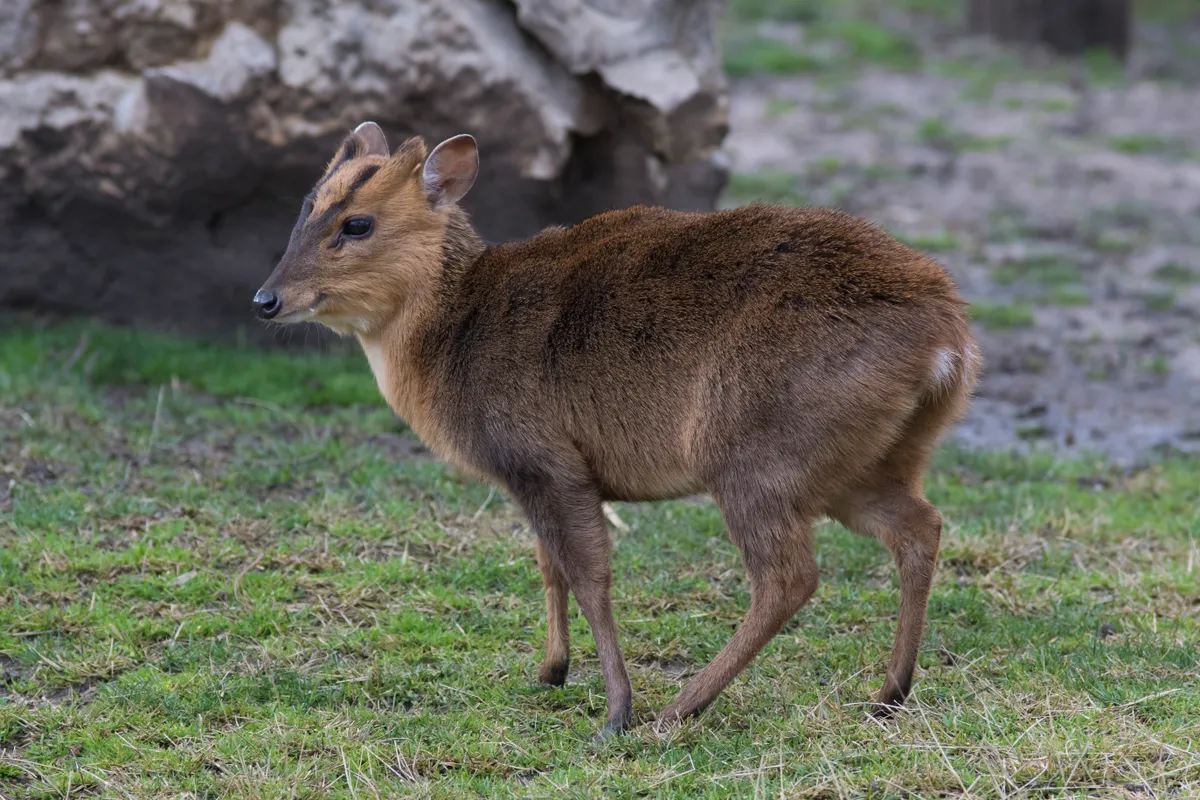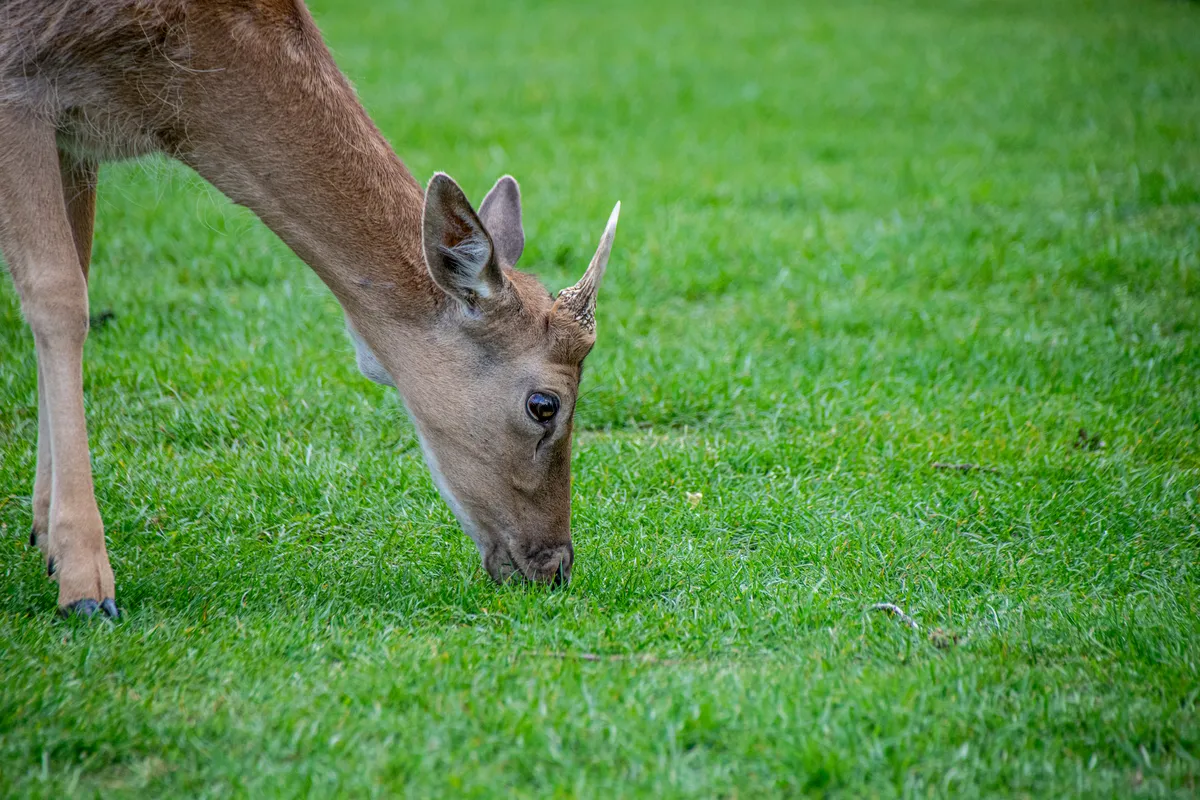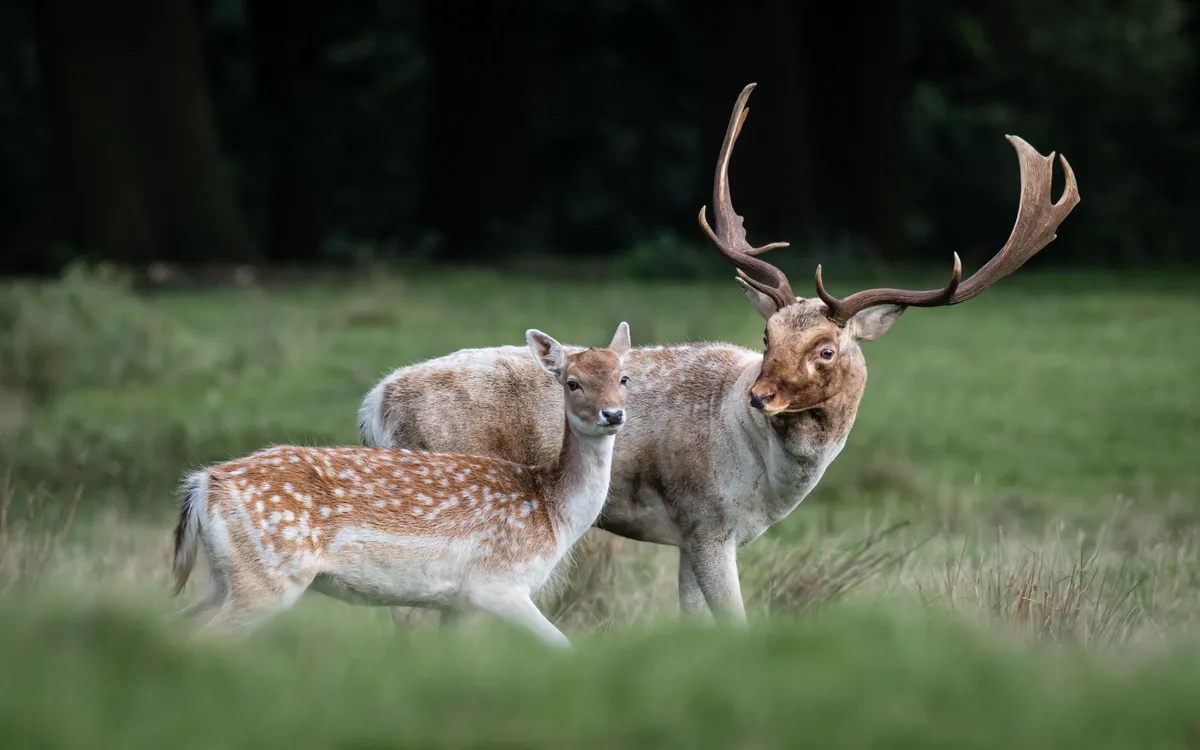Early spring is a good time to look for freshly cast antlers. The male of all British and introduced deer (with the exception of Chinese water deer, which don’t have antlers) cast their antlers and grow a new set each year.
For the first few years, each new set of antlers is bigger and has more points (tines). After about eight years, the antlers ‘go back’, having fewer points and generally being less symmetrical. A new set of antlers is grown in 120 days.
- How well do you know your UK deer species?
- How to identify animal tracks and trails
- Best UK winter wildlife experiences
Being bone, cast antlers are a rich source of phosphorus and calcium, and old antlers are often heavily chewed by mice, squirrels and even deer themselves.
Learn how to identify deer antlers with our expert guide, including facts about each species.
What are deer antlers made of?
Antlers are paired, branched structures that are made entirely from bone and are shed annually. Developing antlers have a high water and protein content and a soft, hair-like covering known as velvet, which comprises blood vessels and nerves. As a result of hormonal and environmental changes, the antler ossifies – the growing, spongy bone is converted into harder, thicker lamellar bone – before the velvet falls away altogether. Antlers are usually only present for a few months before being shed and, apart from reindeer, only occur in males.
When do deer shed their antlers?
Red cast their antlers in February-March, sika in March-May, fallow in April-May, muntjac in May-June and roe in November-December. Antlers can be cast one at a time or, if you are lucky, a pair can be found close together.
How to identify deer antlers
Small antlers
The first antlers of fallow, red and sika are simple spikes with a small or no coronet; they can be anything from a knob to 20cm long.
Muntjac have simple antlers, less than 10cm long. The first antlers are a simple spike with no coronet; thereafter there is a coronet that may have a small tine at the base.

The first antlers of roe deer are simple spikes. Thereafter, there are knobbly coronets with pearling on the bottom third of the antler. Roe generally have three tines, but no tine at the base of the antler. Mostly less than 20cm long.
Medium-sized antlers
Early antlers of fallow deer lack the palmation characteristic of adults. There is a small, upward-pointing tine at the base of the antler, one half way up the shaft and the tip is either unbranched or slightly flattened.

Early antlers of red deer have few tines. There is usually one long tine at the base, curved down (unlike fallow and sika, where the tine points up) and two or three tines on the shaft.
Large antlers
Mature fallow antlers have characteristic palmation; the extent of palmation depends on age and habitat.

Mature red antlers have two tines at the base (sometimes one) that curve down over the face, with one or two tines on the shaft, and one or more at the top.
Sika rarely have more than four tines. The tines are shorter than those of red deer. There is a characteristically short single lower tine that curves upwards.
Why do antlers get gnawed?
Deer chew antlers using molars in the side of their mouth (they only have incisors in the lower jaw) leaving rough, irregular chewing marks at the end of the antler.
Mice and voles gnaw antlers with their incisors, leaving parallel tooth marks 1mm wide. Squirrel and rat tooth marks are about 2mm across, rabbit and hare tooth marks about 4mm across.
